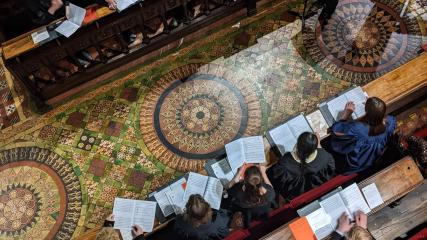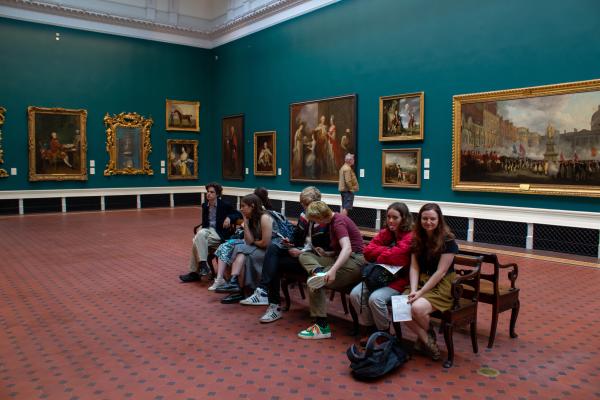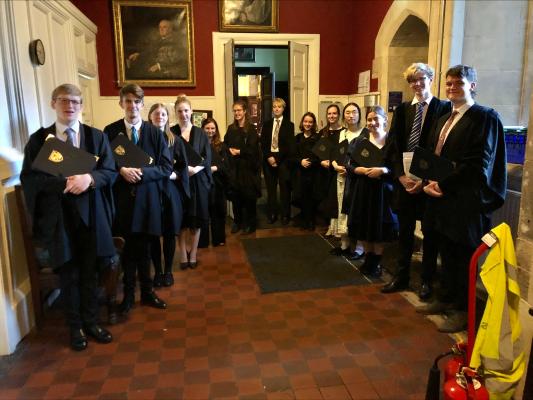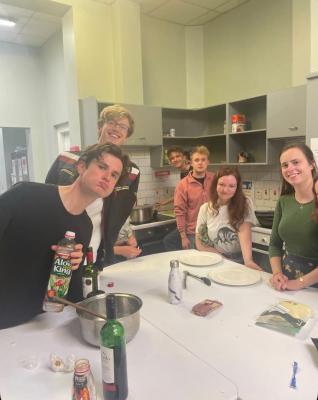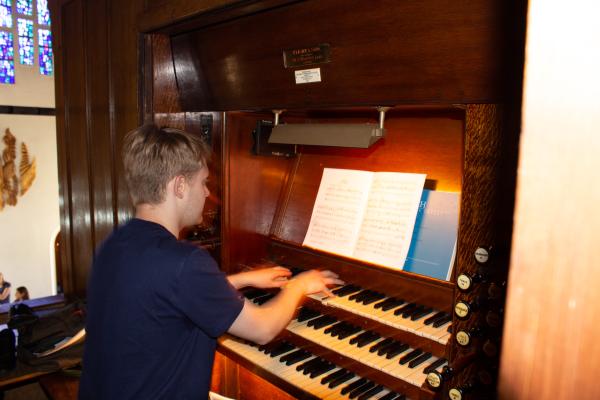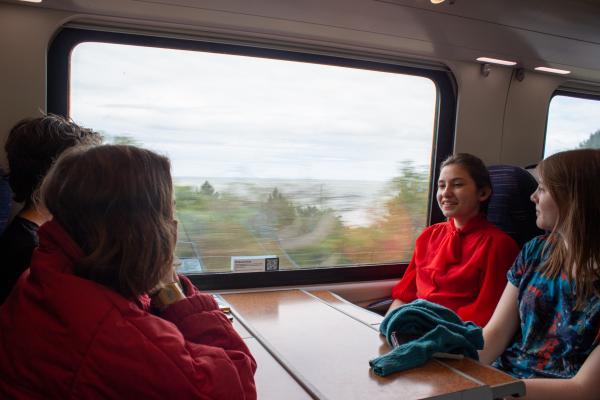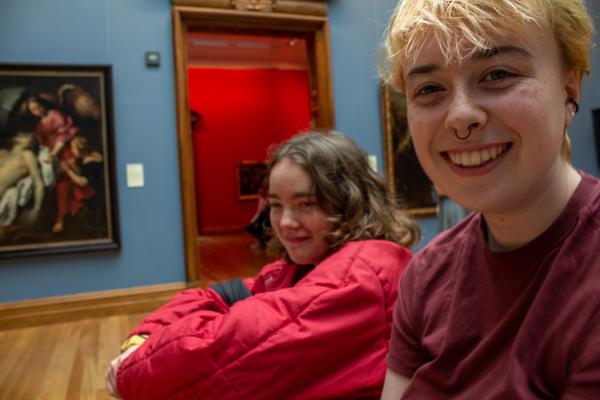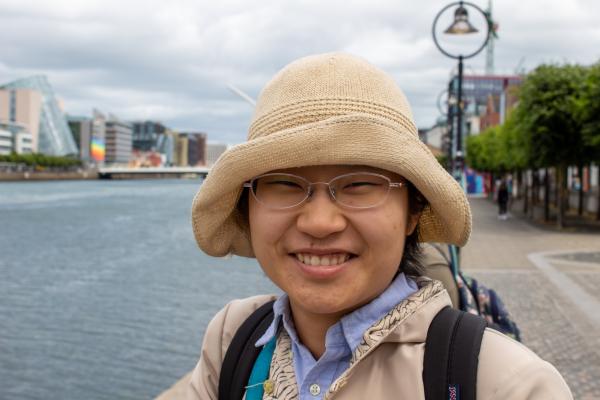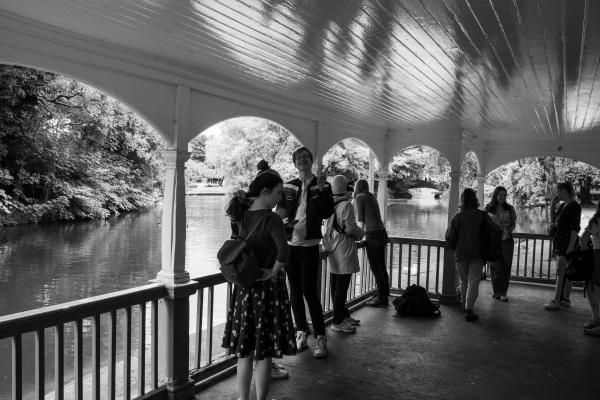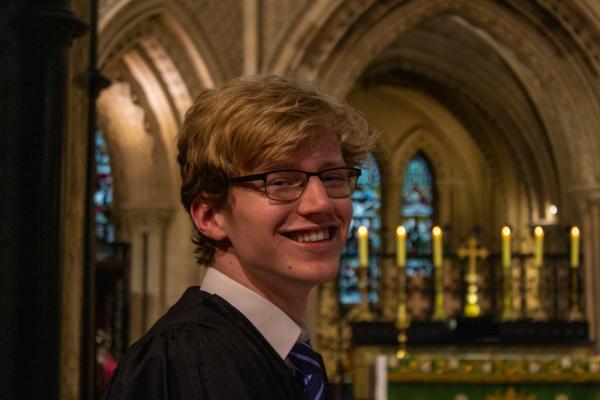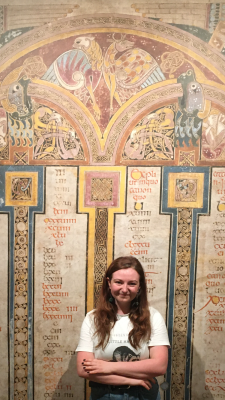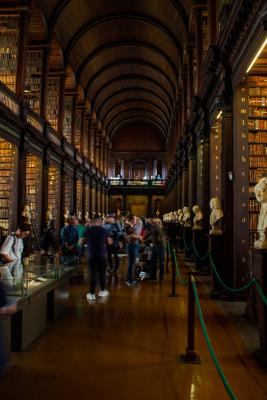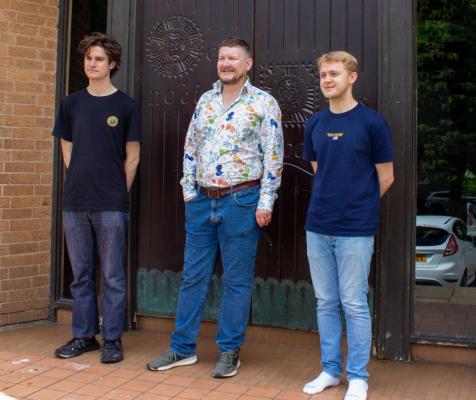The Corpus Choir in Ireland: performing, exploring and visiting an old friend
Chorister Lottie Wells (ASNC 2020) describes the Corpus Choir's recent trip to Ireland.
After a year of performing weekly Evensongs and Eucharists, with a few additional concerts, the Chapel choir of Corpus Christi were finally able to complete a musical tour based in Dublin, after the prospect of travel last year was rendered impossible by Covid restrictions. Students from Corpus, along with singers from Clare College, Peterhouse College and the staff of the University headed to Dublin in June for a residency at the historic Christchurch Cathedral. After the limitations placed on most gatherings during recent years, it provided a fantastic opportunity for the choir to socialise, as well as perform some of our favourite repertoire from the year. Along with Canticles by Charles Wood and Edward Bairstow, the choir performed Leighton’s exuberant “Let All the World in Every Corner Sing”, and Schubert’s “Mass in G”, which included 3 phenomenal soloists.
When not rehearsing, we were able to explore Dublin, visiting the National Gallery of Ireland and the Irish Emigration Museum. The itinerary also included a day’s trip to Belfast, during which some members of the choir were able to rediscover a former Corpus organ at Methodist College. We spent several evenings exploring the city and listening to the folk music that was being performed in local pubs, though sadly we struggled to find the traditional music that we were looking for!
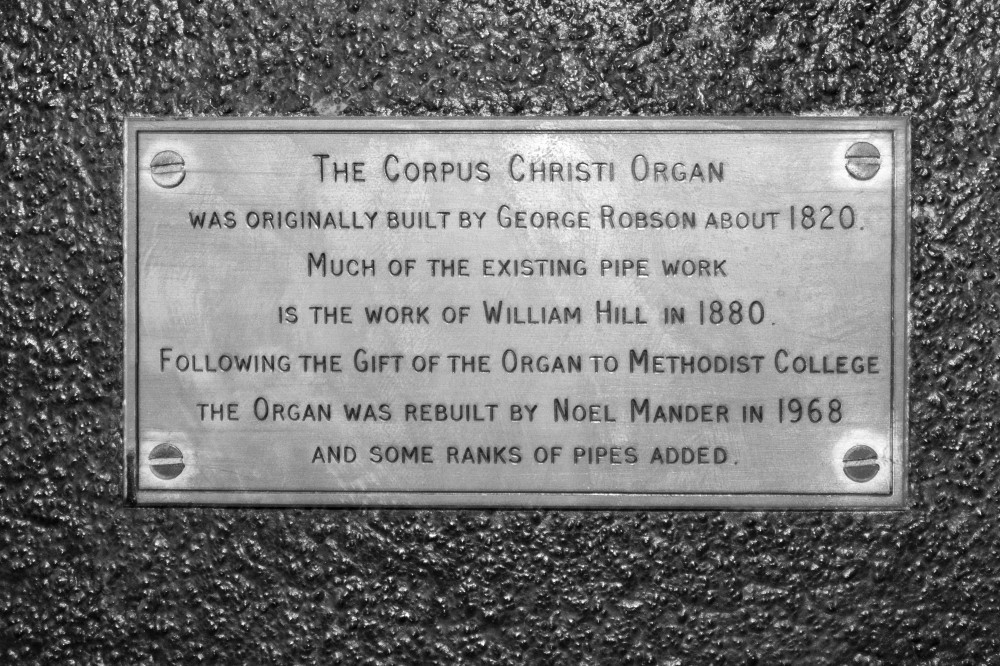 Director of Music Nick Danks says, "It was wonderful to explore Dublin with the Choir and to experience the spacious acoustics of the Cathedral. I was able to take our current organ scholars, Collin Millington and Perrin Ford, to visit the organ that had been transported after 150 years in the Chapel from Corpus Christi to Methodist College in Belfast."
Director of Music Nick Danks says, "It was wonderful to explore Dublin with the Choir and to experience the spacious acoustics of the Cathedral. I was able to take our current organ scholars, Collin Millington and Perrin Ford, to visit the organ that had been transported after 150 years in the Chapel from Corpus Christi to Methodist College in Belfast."
As an ASNC student, I was particularly fascinated by the archaeological section of the National Museum of Ireland, and its exhibition on the battle of Clontarf (1014), and we were all struck by the elaborate craftsmanship of the prehistoric golden jewellery. However, the highlight of the trip for me personally has to be our visit to Trinity College to see the Old Library and what is probably the most famous early medieval manuscript in existence: the Book of Kells. While I have encountered digitisations of this manuscript fairly frequently during my studies, they do not account for the sheer beauty of the codex when it is seen in person. The manuscript brings a striking tangibility to the early medieval period: from the elaborate canon tables and full-page images, that are independently great works of art, to the stitched repairs on the parchment (Fol. 11v), or the occasions on which the decoration slightly cuts into the text, the mark of the human hand is evident.
My thanks goes out to everybody who helped to make this tour possible. Best of luck to those who have graduated or who are going on their years abroad, and I can't wait to sing with the rest of you this coming year.
Thanks to Lottie Moss and Matthew Wadey for the photos.

